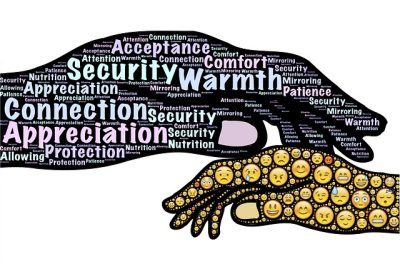Background: Coping through emotional processing (EP) with cancer-related circumstances can take several forms, including methods thought to be constructive (e.g., planning, meaning making) and unconstructive (e.g., rumination). These forms can have differential relationships with experiences of stress. Associations of coping through constructive and unconstructive EP in expressive writing with salivary stress biomarkers were examined among young adult testicular cancer survivors. Constructive processing was significantly associated with less overall daily cortisol output and smaller salivary alpha-amylase awakening response; unconstructive processing was also associated with lower daily cortisol output. These preliminary results from this exploratory study inform future research associating emotion-regulation coping and biological stress reactivity.
Overestimating Self-Blame for Stressful Life Events and Adolescents’ Latent Trait Cortisol: The Moderating Role of Parental Warmth
Background: Cognitive interpretations of stressful events impact their implications for physiological stress processes. However, whether such interpretations are related to trait cortisol-an indicator of individual differences in stress physiology-is unknown. In 112 early adolescent girls (M age = 12.39 years), this study examined the association between self-blame estimates for past year events and latent trait cortisol, and whether maternal warmth moderated effects. Overestimating self-blame (versus objective indices) for independent (uncontrollable) events was associated with lower latent trait cortisol, and maternal warmth moderated the effect of self-blame estimates on latent trait cortisol for each dependent (at least partially controllable) and interpersonal events. Implications for understanding the impact of cognitive and interpersonal factors on trait cortisol during early adolescence are discussed.
Prematurity and perinatal adversity effects hypothalamic-pituitary-adrenal axis reactivity to social evaluative threat in adulthood.
Background:
This study examined the long-term effects of prematurity and perinatal adversity on individual differences in stress-related reactivity and regulation of the HPA axis. A prospective sample of 155 infants born preterm and healthy (n = 20), medical illness (n = 48), neurological illness (n = 26), and small for gestational age (n = 24) and full-term (n = 37) were recruited between 1985 and 1989. At age 23 years, multiple saliva samples were collected before and after participation in the Trier Social Stress Test and later assayed for cortisol. Results reveal that at age 23 years, infants born premature with neurological complications showed higher cortisol reactivity to social evaluative threat compared to either their full-term, small for gestation age, medically ill, or healthy preterm peers. Findings are discussed in terms of implications for contemporary theories that propose effects of early adversity on biological sensitivities and susceptibilities, which translate experience into developmental outcomes related to poor health and risk for disease.
Prefrontal Cortex Activity Is Associated with Biobehavioral Components of the Stress Response
Background:
Contemporary theory suggests that prefrontal cortex (PFC) function is associated with individual variability in the psychobiology of the stress response. Advancing our understanding of this complex biobehavioral pathway has potential to provide insight into processes that determine individual differences in stress susceptibility. The present study used functional magnetic resonance imaging to examine brain activity during a variation of the Montreal Imaging Stress Task (MIST) in 53 young adults. Salivary cortisol was assessed as an index of the stress response, trait anxiety was assessed as an index of an individual’s disposition toward negative affectivity, and self-reported stress was assessed as an index of an individual’s subjective psychological experience. Heart rate and skin conductance responses were also assessed as additional measures of physiological reactivity. Dorsomedial PFC, dorsolateral PFC, and inferior parietal lobule demonstrated differential activity during the MIST. Further, differences in salivary cortisol reactivity to the MIST were associated with ventromedial PFC and posterior cingulate activity, while trait anxiety and self-reported stress were associated with dorsomedial and ventromedial PFC activity, respectively. These findings underscore that PFC activity regulates behavioral and psychobiological components of the stress response.
Seminar Event: Ecology becomes biology: A population health perspective on self-regulation and the foundations of health disparities
 Wednesday, September 21, 2016
Wednesday, September 21, 2016
12 PM – 1:15 PM
Room 2086 AIRB
Speaker: Sara B Johnson, Ph.D., MPH, Associate Professor of Pediatrics & Public Health, Johns Hopkins University Schools of Medicine & Public Health; Director, Rales Center for the Integration of Health & Education
Abstract:
This talk will focus on how the social environment shapes the basic building blocks of self-regulatory development (cognitive, emotional, behavioral, physiological) in the first two decades of life, and the implications of this knowledge for efforts to reduce child and health and educational disparities.
Biography:
Dr. Sara B Johnson Ph.D., MPH is an Associate Professor of Pediatrics and Public Health at Johns Hopkins University Schools of Medicine & Public Health. Dr. Johnson is also Director of General Academic Pediatrics Fellowship and Director of the Rales Center for the Integration of Health & Education. She holds a Ph.D. in Health Policy & Management from the Johns Hopkins Bloomberg School of Public Health, and an MPH degree from the Johns Hopkins School of Hygiene & Public Health. Dr. Johnson’s research aims to integrate developmental biology and sociology to explain population- level health disparities. She has spent more than 10 years to understand the complex mechanisms through which early life environments, particularly adverse environments, shape health, development, and learning, with implications for health and achievement across the life course. Her interdisciplinary research has focused on two related areas: (1) adolescent brain development and health behavior; and (2) the impact of stress and adversity on child health and development. Her research has involved substantial use of salivary biomarkers to index individuals’ response to environmental stimuli.
Coordination of cortisol response to social evaluative threat with autonomic and inflammatory responses is moderated by stress appraisals and affect.
Background: Recent approaches to stress regulation have emphasized coordination among multiple biological systems. This study builds on evidence that hypothalamic-pituitary-adrenal (HPA) axis activity should be considered in coordination with other stress-sensitive biological systems to characterize healthy responses. Healthy African-Americans (n=115) completed the Trier Social Stress Test, and biological responses were assessed through salivary cortisol, dehydroepiandrosterone-sulfate (DHEA-S), alpha amylase (sAA), and C-reactive protein (sCRP). Multilevel modeling demonstrated that cortisol responses typically aligned with changes in DHEA-S, sAA, and sCRP across the session. At the same time, the degree of cortisol coordination with sAA and sCRP varied by participants’ subjective stress following the task; participants with higher secondary stress appraisals showed greater cortisol-sAA alignment, whereas those experiencing more negative affect showed greater cortisol-sCRP alignment. Results highlight the importance of a multisystem approach to stress and suggest that positive HPA axis coordination with the autonomic response, but not with the immune/inflammatory response, may be adaptive.
Coordination of cortisol response to social evaluative threat with autonomic and inflammatory responses is moderated by stress appraisals and affect.
Background: Recent approaches to stress regulation have emphasized coordination among multiple biological systems. This study builds on evidence that hypothalamic-pituitary-adrenal (HPA) axis activity should be considered in coordination with other stress-sensitive biological systems to characterize healthy responses. Healthy African-Americans (n=115) completed the Trier Social Stress Test, and biological responses were assessed through salivary cortisol, dehydroepiandrosterone-sulfate (DHEA-S), alpha amylase (sAA), and C-reactive protein (sCRP). Multilevel modeling demonstrated that cortisol responses typically aligned with changes in DHEA-S, sAA, and sCRP across the session. At the same time, the degree of cortisol coordination with sAA and sCRP varied by participants’ subjective stress following the task; participants with higher secondary stress appraisals showed greater cortisol-sAA alignment, whereas those experiencing more negative affect showed greater cortisol-sCRP alignment. Results highlight the importance of a multisystem approach to stress and suggest that positive HPA axis coordination with the autonomic response, but not with the immune/inflammatory response, may be adaptive.


